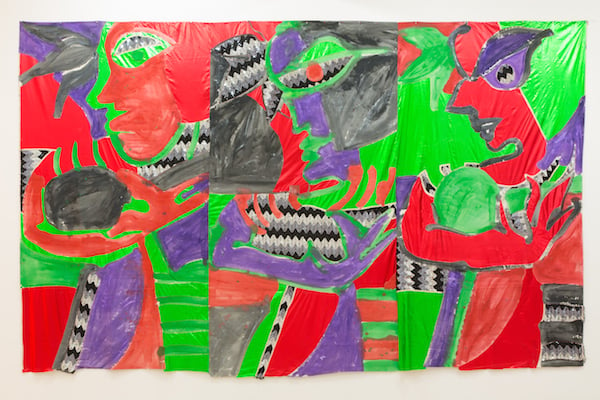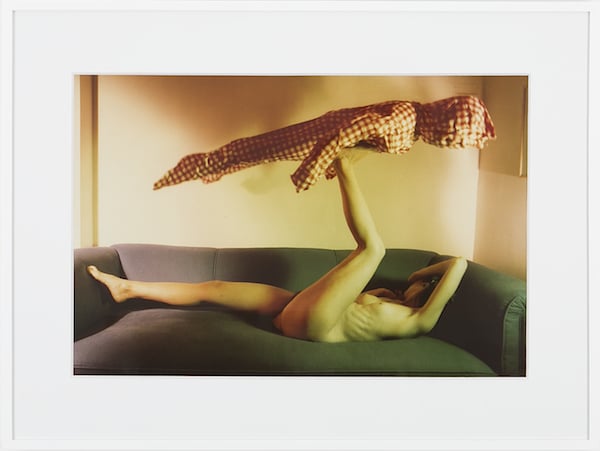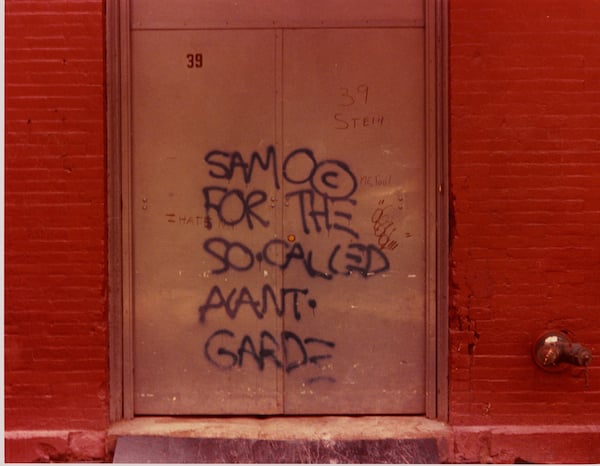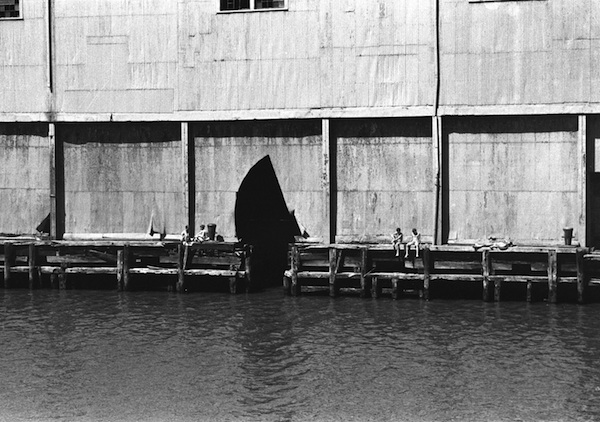Art & Exhibitions
Ben Davis on Why ‘Greater New York’ Matters for the International Art World
There are more Gen Xers and Baby Boomers in this show than Millennials.

Courtesy the artist. Photo by Pablo Enriquez
There are more Gen Xers and Baby Boomers in this show than Millennials.

Ben Davis

“Greater New York” is upon us. While the massive, 157-artist show opens on October 11, the press begin their crawl Friday. It will be met, as all such surveys are now, with a flood of intensive Instragramming and insta-punditry. Here are some thoughts to keep in mind about what it all might mean—because the big show is different this year, and that difference says something about how New York is changing.
Specifically, it inaugurates a new concept: “Greater New York 2015” is a post-“emerging art” survey.

Jimmy DeSana, Contact Paper(1980).
Courtesy Salon 94
The show began in 2000 as a way to consummate the odd-couple merger of PS1 and MoMA, welding the latter’s institutional clout with the former’s alternative vibe, limiting the range to artists to those who had their first solo shows in the last few years.
By the time its return edition opened in 2005 to coincide with the art fairs, the ever-expanding art market had already made this “emerging artist” focus feel like a visual-arts version of corporate indie rock.
“[T]his reincarnated enterprise had no way of separating itself from the market’s engorged desire for some institutional guidance among the sea of young artists now plying their wares in New York,” curator Peter Eleey wrote in Frieze of the 2005 affair. He added that “you half-expect dealers’ mobile phone numbers to show up on wall labels.”
A few years later, Eleey would join the MoMA PS1 team, and was promoted to Associate Director in 2013. He has overseen a big part of the curatorial work on this year’s show, so that decade-old review of “GNY 2005” now reads as a negative manifesto.
“Greater New York 2015” still presents plenty of “artists to watch.” In terms of the gallery representation of the artists involved, it seems to be pretty Lower East Side-y. The most influential art gallery here turns out to be the indie-ish 47 Canal, which shows Gregory Edwards (b. 1981), John Finneran (b. 1979), Ajay Kurian (b. 1984), and Stewart Uoo (b. 1985).
But the key number to remember is 48. That’s the average age of the participants overall. Those that are living, that is. The show contains a fair number of figures—from pioneering collage filmmaker Marie Menken (1909-1970) to the late, great Gordon Matta-Clark (1943-1978)—who are historical. (For “Greater New York” back in 2010, the average age would have been 34, by my calculations.)

Henry Flynt, The SAMO© Graffiti (1979).
Image: Collection Emily Harvey Foundation
In terms of demographics, there are more artists who are either Gen Xers (1965-1984) or Baby Boomers (1946-1964) than Millennials. Heck, there’s a significant Greatest Generation contingent.

Alvin Baltrop, The Piers (With couple engaged in sex act) (1975-86).
Courtesy Third Streaming
The “Greater New York” press release makes it clear that the changes in the focus of the show are the result of double pressures: the need to figure out what such a survey does in the age of constant art fairs, with their constant volleys of new product (reflecting Eleey’s long-ago criticism of “GNY 2005”); and the need to be faithful to the wave of nostalgia for New York’s wilder days triggered by “a voracious real estate market that poses particular challenges to local artists.” (It could be clearer that the real-estate boom and the art-boom are two halves of the same whole, so that what lifts art up with one hand pushes it down with the other.)
When Eleey wrote his review of the 2005 show, the gang on Sex and the City had just discovered Brooklyn existed. Now, Brooklyn is the least affordable housing market in the country. And so, the question that seems to hang over the show is how much space for the new there is left in New York.
This year’s “Greater New York” feels like its curators have added a question mark to the end of the title. I’m eager to see how it feels overall, but this in itself already says something about this prickly and soul-searching moment.